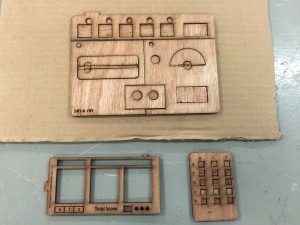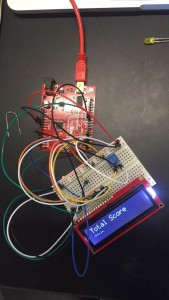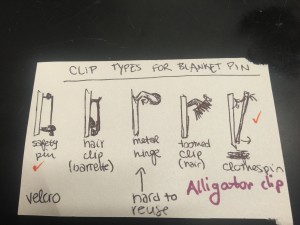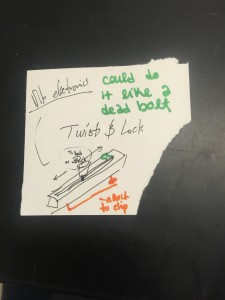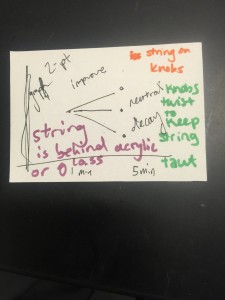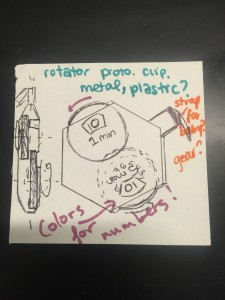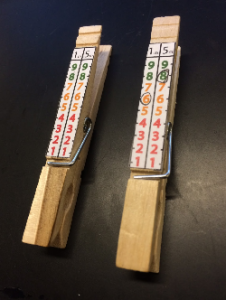Our fourth week working at the OEDK is already over! This week has consisted of low-fidelity prototyping, scoring and screen, and learning how to spell chitenge.
At the start of this week, Harrison, Whitney, and I brainstormed and wrote out our initial DCR, problem statement, and design criteria. As we understood it, the problem consisted of midwives at QECH incorrectly scoring neonates and pediatricians receiving the wrong APGAR information down the line. This made it difficult for doctors to know the history and treat the babies. Our solution to this was to create a mechanical adding device that would standardize the scoring techniques of the midwives. We began by brainstorming interfaces that we lasercut and creating an Arduino based interface using a LCD screen, LEDS, and potentiometers (both pictured below).
By the end of this process, we had lots of questions for the Rice interns currently at the QECH. In fact, Skyping with the QECH interns on Wednesday changed our entire perspective on our project. We ended up changing our problem statement and design criteria entirely.
The QECH interns told us much that we didn’t know about the hospital environment. The short-staffed midwives in the maternity ward operate on a triage system. When they see an obviously unhealthy baby, they move immediately to treatment and don’t bother recording an APGAR score. When healthier babies are born, midwives will tend to the mother’s health, as the hospital puts more emphasis on maternal mortality than infant mortality. These factors contribute to an atmosphere in which APGAR scoring is not a priority, though midwives have the proper training to accurately score a neonate.
This new information prompted us to do a new brainstorming session in the Arts and Architecture library. We came up with lots of drawings, concepts, and an impressive amount of notecards (some examples below).
After screening and scoring, the idea we focused on was a clip that can be attached to the baby and can display both APGAR scores. Babies at QECH are wrapped in chitenges (wearable fabric pieces), and the utility of the clip could work as a fastener as well as be easy to use for a nurse.
After a quick round of prototyping, we came up with an initial design (below). It features two color-coded columns for selecting APGAR scores at 1 and 5 minutes. Ideally, a nurse could mark the clip with whatever writing utensil they already carry for filling out medical charts.
On Friday, our team did a design review presentation of our progress. We even demonstrated the clipping device with a makeshift chitenge and a baby doll, affectionately named Helga. Next week, we plan to do more solid prototyping and begin to develop our final devices for export to QECH.
